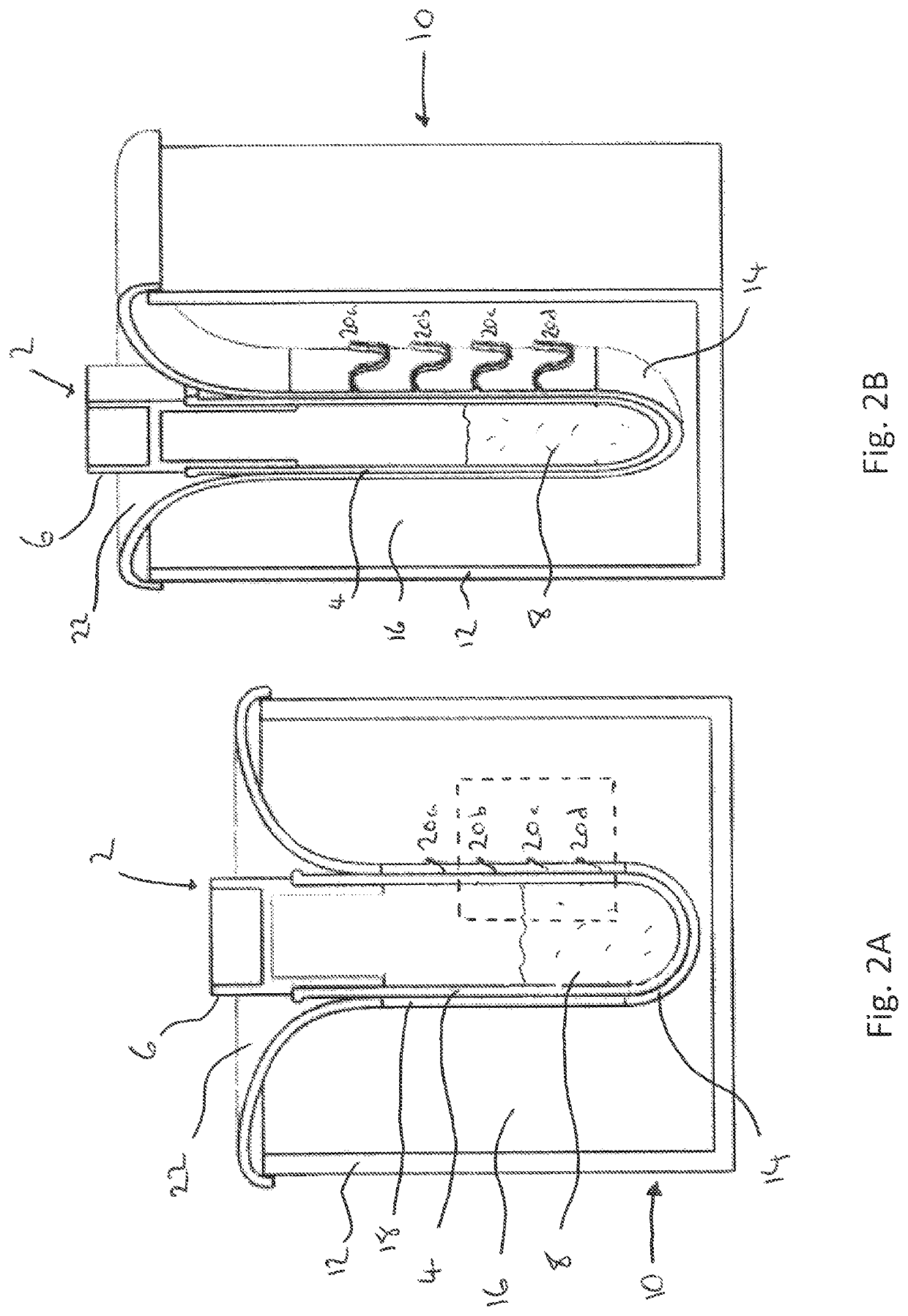Thawing methods and apparatus
a thawing method and apparatus technology, applied in the field of thawing samples, can solve the problems of inability to physically perform, long thawing period, and slow thawing rate, and achieve the effects of reducing the number of dead animals
- Summary
- Abstract
- Description
- Claims
- Application Information
AI Technical Summary
Benefits of technology
Problems solved by technology
Method used
Image
Examples
Embodiment Construction
[0162]In order that the invention may be more clearly understood embodiments thereof will now be described by way of example only with reference to the accompanying drawings of which:
[0163]FIG. 1 illustrates a sample thawing and / or cooling apparatus of the third and fifth aspects of the invention with a biological sample container there above;
[0164]FIGS. 2a and 2b illustrate cross-sectional views of the biological sample thawing and / or cooling apparatus of FIG. 1 with an inserted sample container;
[0165]FIG. 3 illustrates a second embodiment of a sample thawing apparatus of the invention with an inserted frozen biological sample container;
[0166]FIGS. 4a and 4b illustrate cross-sectional views taken from the boxed area of FIG. 2a, showing thermal gradients across the sample container wall during different heating / thawing regimes;
[0167]FIG. 5 is a graph illustrating thawing speed versus outside wall temperature in relation to thawing of a cryopreserved sample;
[0168]FIG. 6 is a graph il...
PUM
| Property | Measurement | Unit |
|---|---|---|
| temperature | aaaaa | aaaaa |
| length | aaaaa | aaaaa |
| volumes | aaaaa | aaaaa |
Abstract
Description
Claims
Application Information
 Login to View More
Login to View More - R&D
- Intellectual Property
- Life Sciences
- Materials
- Tech Scout
- Unparalleled Data Quality
- Higher Quality Content
- 60% Fewer Hallucinations
Browse by: Latest US Patents, China's latest patents, Technical Efficacy Thesaurus, Application Domain, Technology Topic, Popular Technical Reports.
© 2025 PatSnap. All rights reserved.Legal|Privacy policy|Modern Slavery Act Transparency Statement|Sitemap|About US| Contact US: help@patsnap.com



